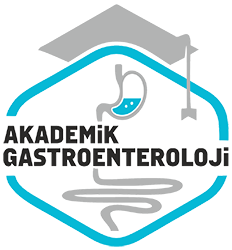Aralik 2007
Gluten enteropatisi sıklığı
The frequency of gluten enteropathy disease
- Ana Sayfa
- Sayılar
- Aralik 2007
- Gluten enteropatisi sıklığı...
Özet
Giriş ve Amaç: Çölyak hastalığı tüm dünyada yaygın olarak görülen ve sebep olugu şiddetli enteropati glutensiz diyetle düzelebilen bir hastalıktir. Toplumdaki tarama çalışmalarinda en yaygin yöntem, ilk adimda hasta serumunda antigliadin antikorlarini araştırmak, daha sonrasinda ise anti endomisyum antikorlarin varligini belirlemektir. Çalışmamızin amacı, bölgemizdeki çölyak hastalığı sikligini tespit etmektir. Gereç ve Yöntem: çalışmaya yaşlari 7 ile 14 arasında degisen 194 çocuk (104 kiz, 90 erkek, ort. yaş 9.8 yıl) katildi. IgA ve IgG tipinde antigliadin antikorlari ELISA yöntemiyle, antigliadin antikoru pozitif olanlarda da anti endomisyum antikoru ise, Euroimmun titerplane technique (Medizinische Laboradiagnostika) yöntemiyle bakildi. Bulgular: 43 ögrencinin antigliadin antikoru IgA?si pozitif, 21 ögrencinin antigliadin antikoru IgG?si pozitif ve sadece bir ögrencinin anti endomisyum antikoru antikorlari pozitif bulundu. Antigliadin antikorlarinin hassasiyet ve özgüllügü sırasıyla %100, %87, anti endomisyum antikoru hassasiyet ve özgüllügü ise %100 olarak bulundu. Sonuç: Yöremizde çölyak hastalığı sikligi %0.51 olup, dünyadaki oranlardan oldukça düşüktü. Bulgularimiz ilerde yapilacak çölyak hastalığı taramalarinda antikor tespitinin yararlari- ni göstermıştır. Örnekleme sayimizda belirledigimiz oranlari, tüm popülasyona genelleyebilmek için yeterli olmadigi halde, bu tür bir çalışma, bölgede yapilacak diğer araştırmalara yol göstermesi açi- sindan önem tasimaktadır.
Abstract
Background and Aims: Celiac disease represents a significant health problem worldwide in identified patients; however, the severe enteropathy of celiac disease can be controlled with a gluten-free diet. Population screening studies using IgA/IgG antigliadin antibody determinations in patient serum as the first step and evaluation of the antigliadin antibody- positive subjects by IgA class anti-endomysium antibody tests as the second step has been the most common screening schedule. The aim of this study was to assess the prevalence of celiac disease in our local area. Materials and Methods: One hundred ninety-four students (104 girls, 90 boys, mean age 9.8 years) were enrolled in the study. Ages ranged from 7 to 14 years. Antigliadin antibodys of both IgG and IgA classes were measured by enzyme-linked immunosorbent assay and IgA class anti-endomysium antibody was measured in antigliadin antibody - positive cases by Euroimmune titerplane technique (Medizinische Laboradiagnostika). Results: Antigliadin antibody-IgA were positive in 43 students, antigliadin antibody - IgG were positive in 21 students and only one student was positive for anti-endomysium antibody. Sensitivity and specificity for antigliadin antibody were 100% and 87%, respectively, and for anti-endomysium antibody were 100% and 100%, respectively. Conclusions: Prevalence of celiac disease in the study population was 0.51%. This value is less than in other countries. The findings suggest the importance of the primary testing of autoantibodies in future celiac disease screening policies in this area. Although the number of the studied population was insufficient for generating the results to the entire population, it will be a guide for future evaluations in our region.



